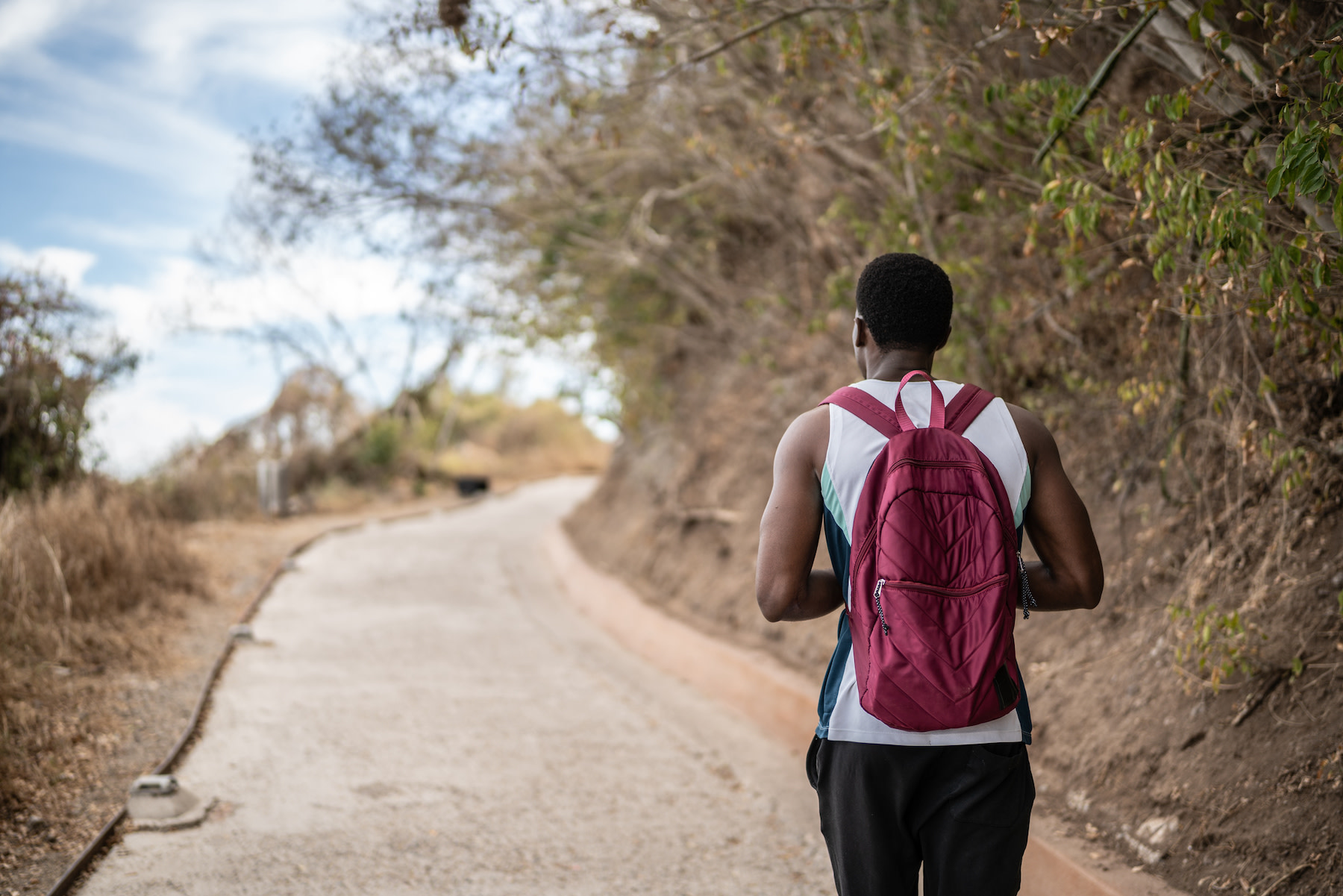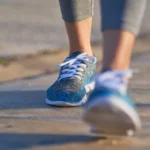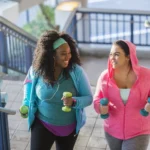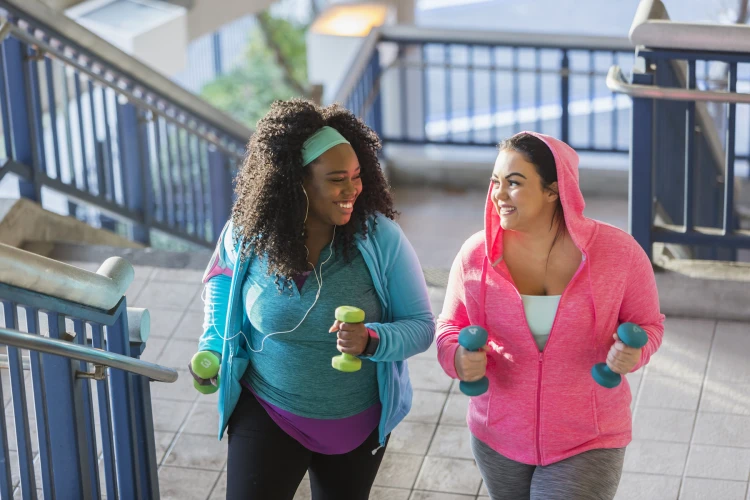The Benefits of Walking with Weights
This workout can yield the myriad benefits of walking on its own… and then some. To recap, the health and wellness perks of walking workouts include:
-
A lower risk of all-cause mortality, cardiovascular disease, and some cancers
-
Improvements in blood pressure and heart rate
-
Reduction of depressive symptoms and stronger emotional stability
-
Increased hippocampal volume and better memory
-
Speedier digestion after a meal
Better yet, some of these benefits can be attained by walks as brief as 5 to 20 minutes.
Once you add weights into the mix, you may be able to amplify some of the aforementioned benefits while gaining new ones. “Adding weights to your walking workouts can increase the intensity, helping to burn more calories and enhance muscle engagement,” says Peloton instructor Matty Maggiacomo. Adding resistance can potentially improve strength, he says.
There aren’t many recent studies that specifically focus on walking with hand and ankle weights. However, a handful of older studies have looked into their impact, albeit they used small sample sizes—not to mention a good few decades have passed—so it’s best to take the findings with a grain of salt. For instance, one study done in the late-80s suggest that ‘power walking’ with hand weights can deliver more oxygen to your cardiovascular system and boost your calorie burn more than standard walking, while another study from the mid-80s found that walking at 4 mph with ankle and hand weights to be as intense as running at 5 mph. Clearly, walking with weights last had it’s heyday in the 80s, and we can only hope that with newfound popularity comes more up to date research on the benefits of walking with weights.
More recent research has focused on weighted walks while wearing a weighted vest and rucking (i.e., walking with a weighted backpack). As for which one to choose if you (literally) want to go the extra mile? Both have their merits and it ultimately comes down to your personal preference. However, a small 2020 study of 9 females published in the journal Ergonomics found that those who wore a weighted vest on a treadmill showed significantly longer exercise time until volitional fatigue, compared to those who walked with a rucksack, likely due to the more even weight distribution. Published in the same journal, another 2022 study of 20 adult CrossFitters found that physiological stress increased in those wearing a weighted vest (20 pounds for men, 14 pounds for women) but only on a 10 percent gradient. In addition, the participants didn’t experience changes in stride length or frequency, which the researchers noted was a good sign in terms of injury risk.
On the other hand, rucking also demonstrates benefits including significant increases in force for exercises like jump squats, push-ups, and sit-ups (as well as a boost in estimated maximal oxygen uptake), which can be attractive for those who want to boost performance with these classic strength training moves.
When to Choose A Weighted Walk Over a Normal Walk
You might decide to take a weighted walk over a normal walk if you:
-
Are targeting certain gains (e.g., sculpted arms or endurance)
-
Know you’re not working a specific muscle group enough
-
Want to challenge yourself
Should You Walk with Weights Every Time You Go for a Walk?
This workout could be a fun new way to move and groove. (Moreover, you can easily integrate it into your lifestyle—even, say, by walking to the grocery store and carrying your weekly haul in a backpack to your home, or using two large bottled beverages as stand-in hand weights.) Still, you don’t need to add weights to every walk—especially on your active rest days.
“Mix up your routine by alternating between weighted and non-weighted walks,” Matty advises.
4 Ways to Walk with Weights

FG Trade Latin / E+ via Getty Images
Ankle Weights
You can strap on light ankle weights, at 1 to 3 pounds to start, no matter if you’re walking outdoors or on the treadmill. Ankle weights primarily target lower body muscles, enhancing leg strength, Matty shares. They’re good to use if you want to build strength and muscle mass in your lower body and/or you don’t normally focus on your legs during your usual workouts.
While wearing ankle weights, short walks at a leisurely pace are recommended over brisk or long walks. Harvard Health warns that overdoing things may heighten the risk of quad dominance at the expense of weakened hamstrings and otherwise pull on the ankle joint, leading to a potential tendon or ligament injury.
Avoid using ankle weights if you have any issues with your hips, knees, or ankles—as well as if you have muscle imbalances in the legs.
Hand Weights
“Handheld weights engage the upper body, contributing to a more balanced workout,” Matty explains. Just avoid using hand weights such as light dumbbells on the treadmill, as you don’t want to risk dropping them. Similar to ankle weights, he suggests beginning with 1 to 3 pounds and maxing out at 5 pounds.
When walking on firm ground with hand weights, keep your arms bent at the elbow as you power up with vertical arm movements (i.e., punching slightly forward and up) to increase the resistance your arms are working against and boost strength with each stride. All the while, be sure to keep your back straight and core engaged to maintain a stable posture.
Tip: While your arms will move naturally as you walk, you may also choose to do some bicep curls and tricep kickbacks to take things up a notch.
Weighted Vest
Intrigued about walking with weights but don’t want to carry dumbbells or strap on ankle weights? Walking with a weighted vest is one option you might want to look into.
“Weighted vests can be used for more intense training,” says Matty. They’ll essentially increase your body weight, thus making your walk more cardiovascularly and muscularly challenging. Since the extra weight is placed closer to your center of gravity, it’s a safer option for those aiming to reduce the risk of (or recovering from) strain or injury. It can also be less conspicuous than ankle weights and dumbbells, as many weighted vests are slim enough to wear under your clothes.
Plus, they may be particularly beneficial to stave off hip fractures in mature populations. Per a pilot study by the Wake Forest University School of Medicine’s INVEST program, older adults on a 12-month weight loss protocol who wore weighted vests—with weight added to the vest corresponding to their own weight loss—for 8 hours a day not only shed pounds but also slowed the progression of bone-density loss in the hips (compared to a weight-loss group that didn’t wear the vest).
Rucking
Rucking is another fun way to go for a weighted walk. Deriving from a form of military training, this workout typically entails carrying a sandbag or weights in a backpack over rugged terrains and/or long distances. (Read: This is definitely an outdoor workout.)
As Peloton instructor Logan Aldridge previously explained, beginners should start their rucking routine with:
-
1 to 2 rucks per week
-
A lighter load at 10 to 20 pounds
-
A relatively short distance of 1 to 3 miles
Related Articles







